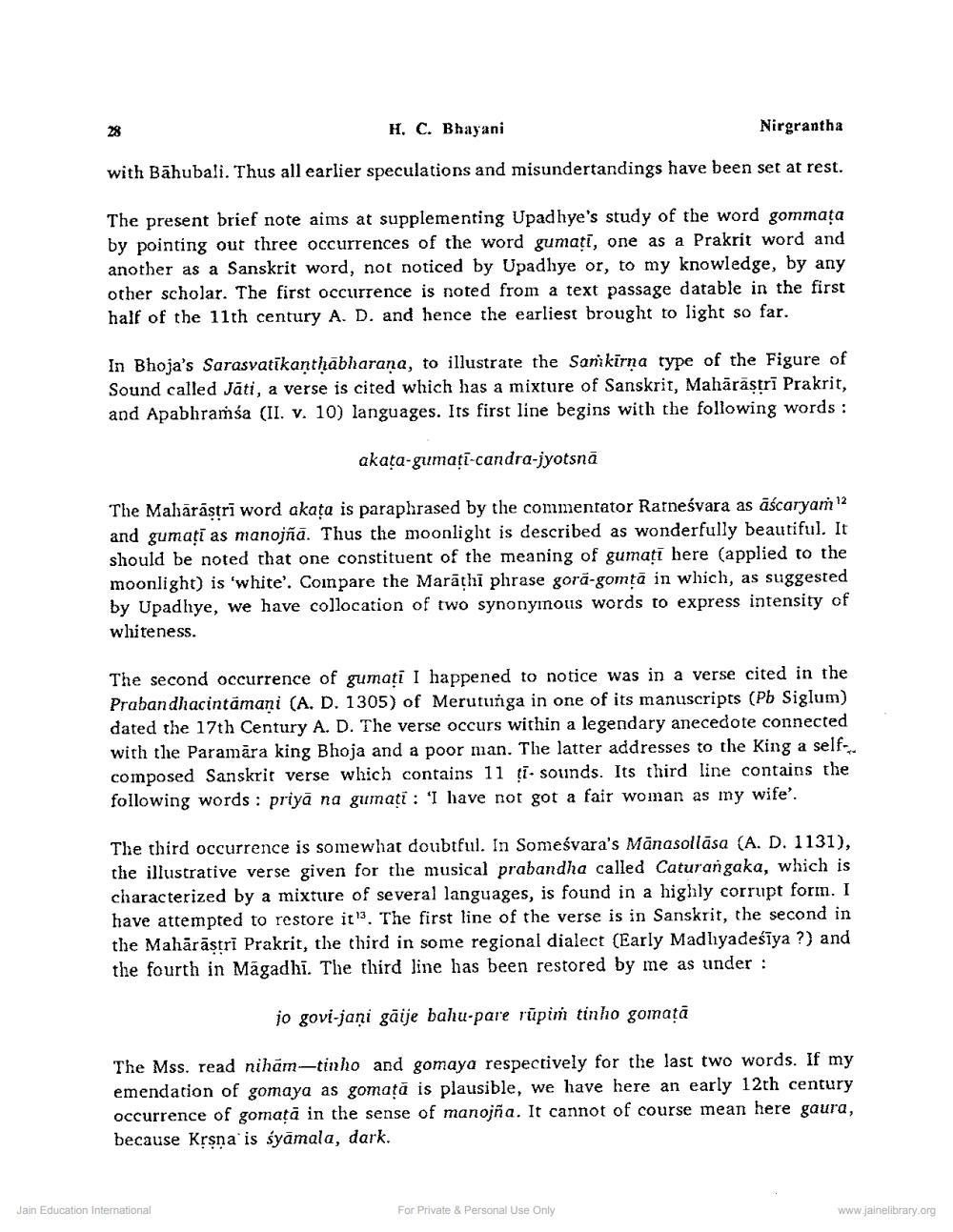Book Title: Notes on Some Prakrit Words Author(s): H C Bhayani Publisher: Z_Nirgrantha_1_022701.pdf and Nirgrantha_2_022702.pdf and Nirgrantha_3_022703.pdf View full book textPage 4
________________ H. C. Bhayani Nirgrantha with Bahubali. Thus all earlier speculations and misundertandings have been set at rest. The present brief note aims at supplementing Upadhye's study of the word gommața by pointing out three occurrences of the word gumaţi, one as a Prakrit word and another as a Sanskrit word, not noticed by Upadhye or, to my knowledge, by any other scholar. The first occurrence is noted from a text passage datable in the first half of the 11th century A. D. and hence the earliest brought to light so far. In Bhoja's Sarasvatīkanthābharana, to illustrate the Sanikīrna type of the Figure of Sound called Jāti, a verse is cited which has a mixture of Sanskrit, Mahārāstrī Prakrit, and Apabhramśa (II. v. 10) languages. Its first line begins with the following words: akata-gumati-candra-jyotsna The Maharastri ord akața is paraphrased by the commentator Ratneśvara as āścaryam 12 and gumați as manojñā. Thus the moonlight is described as wonderfully beautiful. It should be noted that one constituent of the meaning of gumati here (applied to the moonlight) is 'white'. Compare the Marathi phrase gora-gomtā in which, as suggested by Upadhye, we have collocation of two synonyinous words to express intensity of whiteness. The second occurrence of gumati I happened to notice was in a verse cited in the Prabandhacintamani (A. D. 1305) of Merutunga in one of its manuscripts (Pb Siglum) dated the 17th Century A. D. The verse occurs within a legendary anecedote connected with the Paramāra king Bhoja and a poor man. The latter addresses to the King a self.. composed Sanskrit verse which contains 11 ți-sounds. Its third line contains the following words: priya na gumati : 'I have not got a fair woman as my wife'. The third occurrence is somewhat doubtful. In Someśvara's Mānasollāsa (A. D. 1131), the illustrative verse given for the musical prabandha called Caturangaka, which is characterized by a mixture of several languages, is found in a highly corrupt forin. I have attempted to restore it". The first line of the verse is in Sanskrit, the second in the Mahārāstri Prakrit, the third in some regional dialect (Early Madlıyadesiya ?) and the fourth in Māgadhi. The third line has been restored by me as under: jo govi-jaņi gāije bahu-pare rūpim tinho gomatā The Mss. read nihăm-tinho and gomaya respectively for the last two words. If my emendation of gomaya as gomatā is plausible, we have here an early 12th century occurrence of gomatā in the sense of manojña. It cannot of course mean here gaura, because Krsna' is śyāmala, dark. Jain Education International For Private & Personal Use Only www.jainelibrary.orgPage Navigation
1 2 3 4 5 6 7 8 9 10 11 12 13 14
